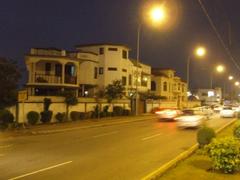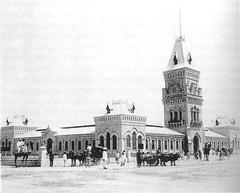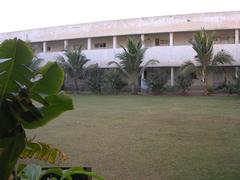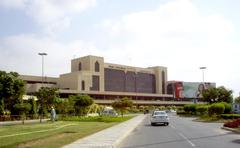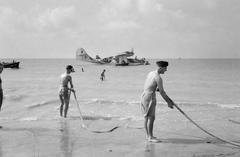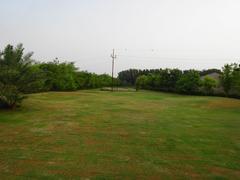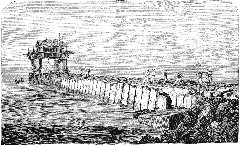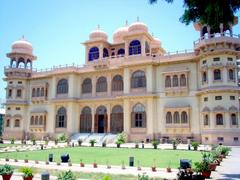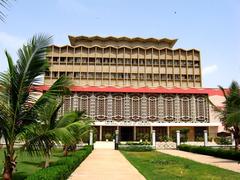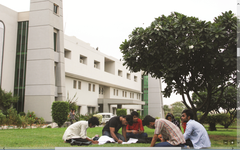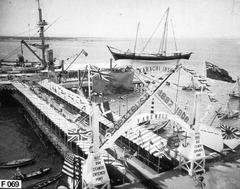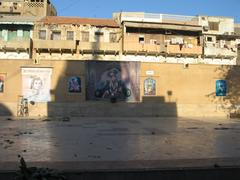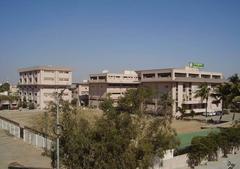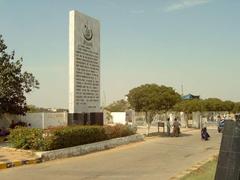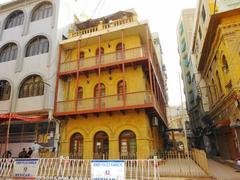Hub Dam Visiting Hours, Tickets, and Comprehensive Guide to Karachi’s Historic Water Reservoir
Date: 15/06/2025
Introduction
Located approximately 56 to 60 kilometers northwest of Karachi, on the border of Sindh and Balochistan provinces, Hub Dam is one of Pakistan’s most significant water reservoirs. Constructed between 1963 and 1981, the dam was designed to resolve Karachi’s severe water shortages and to support agricultural and industrial development in the Lasbela district and Hub Industrial Area (Guide to Pakistan; ARY News). With a storage capacity of around 857,000 acre-feet, Hub Dam stands as the nation’s third-largest dam, supplying up to 100 million gallons of water daily to Karachi and its adjoining regions (Traveler Trails; Dawn).
Beyond its functional importance, Hub Dam is renowned for its ecological value, serving as a protected wildlife sanctuary that attracts migratory birds, including flamingos, pelicans, and herons. Its scenic landscapes, tranquil waters, and proximity to Karachi make it a favored destination for picnics, photography, birdwatching, and nature walks (Samaa TV; The Pakistani Traveller).
This guide provides an in-depth look at Hub Dam’s historical development, structural specifications, operational significance, environmental value, and practical information for visitors—including visiting hours, ticketing, accessibility, safety, and nearby attractions. The ongoing expansion of infrastructure, such as the new canal project, highlights the dam’s evolving role in Karachi’s water security (Dawn).
Table of Contents
- Historical Background and Construction
- Structural Features & Technical Specifications
- Water Management and Operational Significance
- Environmental and Socio-Economic Impact
- Visitor Guide: Hours, Tickets, and Accessibility
- Activities and Facilities
- Safety, Etiquette, and Responsible Tourism
- Conservation Efforts
- Frequently Asked Questions (FAQs)
- Summary and Travel Tips
- References
Historical Background and Construction
The idea for Hub Dam emerged in the 1960s as Karachi’s rapid urbanization and industrialization led to severe freshwater shortages. The Hub River, originating from the Balochistan hills and flowing toward the Arabian Sea, was identified as a viable supplementary source for Karachi’s water supply and for irrigating the arid Lasbela region (Guide to Pakistan).
Construction Timeline
- 1963: Site selection and design by the Water and Power Development Authority (WAPDA).
- Late 1960s–1970s: Foundation and embankment construction, canal system development.
- 1981: Official completion and commissioning of the dam (Traveler Trails).
Objectives of Hub Dam:
- Regulate Hub River flow to prevent floods and ensure year-round water supply.
- Supply potable water to Karachi and the Hub Industrial Area.
- Support agricultural irrigation in Lasbela district.
- Provide water for industrial use (Samaa TV).
Structural Features & Technical Specifications
- Type: Earth-filled embankment dam
- Location: 56–60 km northwest of Karachi, Sindh-Balochistan border (Graana)
- Reservoir Capacity: ~857,000 acre-feet (third-largest in Pakistan) (Traveler Trails)
- Surface Area: ~24,300 acres at full capacity
- Dam Length: ~45 km, with two main canals for Karachi and Lasbela (The News)
- Spillways: For overflow management during heavy rains (Samaa TV)
Water Management and Operational Significance
Key Functions
- Drinking Water: Supplies up to 100 million gallons per day (MGD) to Karachi (actual delivery varies due to infrastructure constraints) (The Nation)
- Irrigation: Supports agriculture in Lasbela district.
- Industrial Use: Supports Hub Industrial Area.
- Flood Control: Mitigates monsoon flooding by regulating river flow.
Operational Challenges
- Droughts: Reduce reservoir levels and water supply.
- Aging Infrastructure: Leakage and seepage in older canals reduce efficiency (The Nation).
- Illegal Extraction: Disrupts equitable distribution.
- Flood Management: Requires careful operation during spillway releases (The News).
Recent Developments
The Sindh government initiated the construction of a new canal to Karachi, with 87% of work completed as of June 2025. The upgraded canal will ensure a more reliable supply of 100 MGD and minimize losses from the old system (Dawn).
Environmental and Socio-Economic Impact
Biodiversity and Ecological Value
- Wildlife Sanctuary: Hub Dam is a protected area attracting migratory birds—flamingos, pelicans, herons—and supporting rich biodiversity (Samaa TV; The Pakistani Traveller).
- Wetlands: Provide habitat for diverse flora and fauna, critical to the region’s ecosystem.
Socio-Economic Contributions
- Urban and Rural Water Security: Lifeline for Karachi’s West and Central districts; vital for agriculture and rural livelihoods in Lasbela (ARY News).
- Employment: Construction and maintenance projects provide jobs for local communities (Dawn).
- Tourism: Hub Dam’s scenic environment draws visitors for recreation and eco-tourism.
Visitor Guide: Hours, Tickets, and Accessibility
Visiting Hours
- General Hours: 8:00 AM – 6:00 PM daily. Early morning and late afternoon are ideal for wildlife viewing and photography.
Entry and Tickets
- Entry Fee: None. The dam is freely accessible to the public. Guided tours may have associated costs if arranged through operators in Karachi.
Getting There
- By Car/Taxi: 1–1.5 hours from central Karachi via Hub River Road or Karachi-Hub-Chowki road.
- Public Transport: Buses to Hub town, then local transport to the dam. Roads may be rough, especially after rain.
Accessibility
- On-Site: Some areas accessible by car; others require walking on uneven terrain.
- Facilities: Limited. No formal restrooms or visitor centers; small vendors sell snacks near the entrance.
Activities and Facilities
Activities
- Birdwatching: Best from November to March; migratory birds abound.
- Photography: Scenic reservoir, especially at sunrise/sunset.
- Picnicking: Popular on weekends; bring your own food, water, and shade.
- Boating/Fishing: Informal boat rides may be available from local fishermen; fishing is allowed in designated areas—bring your own equipment.
- Nature Walks: Explore the reservoir’s edges and nearby hills.
Facilities
- Parking: Limited parking near entrance.
- Food: Small tea stalls and vendors; best to bring your own provisions.
- Restrooms: Not available—plan accordingly.
Safety, Etiquette, and Responsible Tourism
- Water Safety: Swimming is discouraged due to strong currents and absence of lifeguards.
- Spillways: Heed all warnings during high water and avoid restricted areas.
- Wildlife: Observe from a distance; do not feed animals.
- Cultural Etiquette: Dress modestly, respect local customs, and ask permission before photographing residents.
- Environmental Responsibility: Carry out all waste, minimize plastic use, and stay on designated paths.
Conservation Efforts
Hub Dam’s watershed and wetland areas are under threat from water scarcity, deforestation, and urban expansion. Conservation initiatives include afforestation, watershed management, construction of check dams to control erosion, and wetland protection. Community involvement and government support remain vital (IJSRED; Dawn; Tribune).
Frequently Asked Questions (FAQs)
Q: What are the visiting hours of Hub Dam?
A: Generally 8:00 AM to 6:00 PM, but access may be restricted during heavy rains or maintenance.
Q: Is there an entry fee or ticket required?
A: No, entry is free. Guided tours may have a cost.
Q: How do I get to Hub Dam from Karachi?
A: By private car or taxi via Hub River Road; public buses go to Hub town, then local transport covers the final stretch.
Q: Are boats available for rent?
A: Formal rentals are not available, but local fishermen may offer informal rides.
Q: Can I go fishing?
A: Yes, in designated areas. Bring your own equipment.
Q: Are restrooms or food facilities available?
A: Facilities are minimal; bring your own supplies.
Q: Is swimming allowed?
A: Swimming is not recommended due to safety risks.
Summary and Travel Tips
Hub Dam is a cornerstone of Karachi’s water security and a prime destination for nature lovers and day-trippers. Its historical significance, engineering achievements, and ecological richness make it a must-visit. To maximize your experience:
- Visit during cooler months (November–March).
- Bring essentials (food, water, sun protection).
- Respect safety regulations and the environment.
- Download the Audiala app for real-time updates, maps, and travel tips.
Hub Dam stands as a symbol of resilience, resourcefulness, and harmonious coexistence between human needs and the natural world (Guide to Pakistan; ARY News; The Pakistani Traveller; Samaa TV; Dawn).
References
- Guide to Pakistan: Hub Dam History and Guide
- ARY News: Hub Dam Water Levels and Expansion
- The Pakistani Traveller: Hub Dam Visitor Guide
- IJSRED: Land Use Change in the Hub Dam Watershed
- Dawn: The Water Supply Predicament
- Tribune: Progress on New Hub Canal Project
- Samaa TV: Spillway Management and Flood News
- The Nation: Hub Dam Filled After 13 Years
- Dawn: 87% Work on New Hub Canal Project Completed
Images and interactive maps of Hub Dam with alt tags like “Sunset over Hub Dam reservoir” and “Migratory birds at Hub Dam wetlands” are available on our website.
